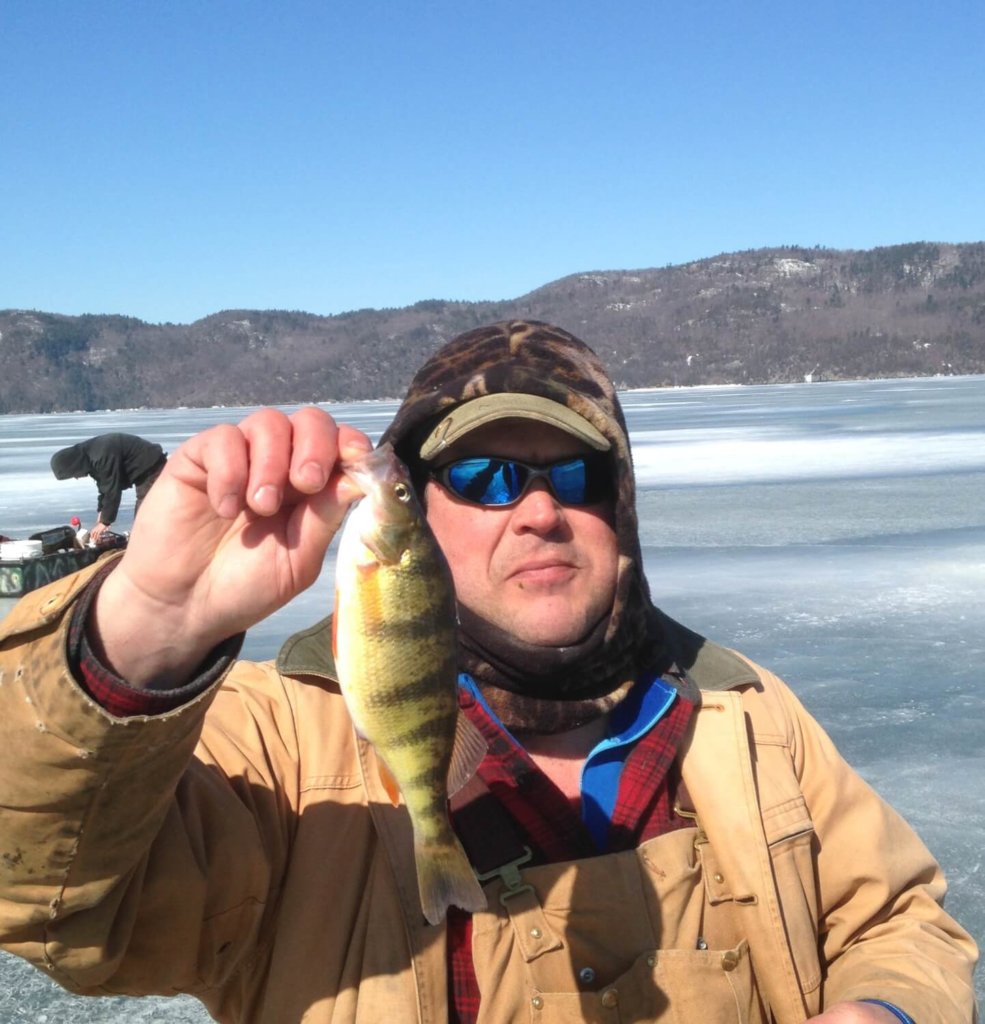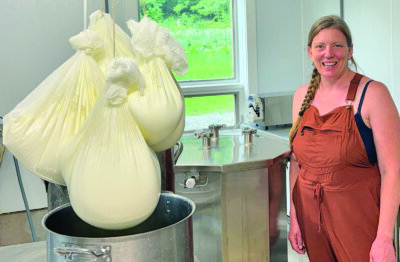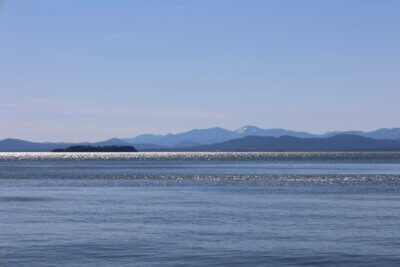Freezing Temps Bring Joy To Some of Us

Some people say we’re due for a January thaw. As I write this, the temperature outside is -3 and the wind chill is -20. The night sky has finally opened up after a snowstorm blanketed the valley, and the stars are shimmering brightly. It’s the kind of cold that when you breathe in, the hairs inside your nose clang together like fragile glass tendrils daring to shatter. All around us people are hibernating in their dens, huddled against the woodstove or heater. But the hardiest of us are enjoying the arctic blast, knowing that the lake is “making ice.” If I were a betting man, I’d put money on the whole lake freezing over this year and lots of truck traffic in the bays.
When the ice is clear and black and it reaches down 16 inches or more, I will venture out onto the frozen bays in search of panfish. I love driving my four-wheel-drive truck out onto the ice and parking it over an underwater drop-off where a myriad of fish—yellow and white perch (which really aren’t perch at all but an invasive species of bass that locals like to call “white perch” just to irritate the gentry), smelt, landlocked salmon and lake trout—swim happily under the solid canopy of glistening ice. They are in search of food or mates, depending on the species, and, if our equipment is properly rigged, are vulnerable to our attempts at angling. Lakers and salmon prefer to cruise just under the surface of the ice, preying on crippled or otherwise compromised minnows, while deeper down, white and yellow perch are nudging small, weighted lures, called bibbits, with spikes (a more palatable term for maggots) threaded on the small sharp hooks.
We “jig” the miniature rods, called “micro rods” or “jigging rods,” by gently bouncing the rod tips up and down to create action on the lure that attracts their attention. From there, the fragrance of a milky liquid secreted from the impaled spike inspires fish to nibble on the lure. Pretty gross, huh? Well, that is what keeps the lure of ice fishing to a minimum. Too many fishermen/women means the spot is probably getting burned out.
So, as the nibbles continue, we might let them take two or three gentle bites testing the tasty morsel before setting the hook in a rapid upward sweep. The rod tip bends toward the ice and the tip of the rod throbs so that the fight can be felt all the way through the grip of the handle. Thwump. Thwump. The rod vibrates powerfully as we begin to reel up the monofilament line. The excitement builds as the fish nears the icy cylinder of water that is the hole. Finally, a big head appears and shakes viciously as it is tugged to the air above.
Sometimes we have wondered what it must be like for a fish to get caught and be reeled up into a shaft of light and be hauled into a world devoid of water. Just air and sunlight. And some big dude who is looking at you with admiration. He calls you a “slabber” and deftly unhooks you and kisses your perch-y lips— then, with a big toothy grin, releases you back down the icy cylinder to your friends waiting below the surface. If perch communicate, how do you think they relate their extraterrestrial experience to their peers?
It’s an odd thing to ponder, but when you spend a lot of time sitting on your bucket waiting for that bite in the frigid air, you begin to think strange thoughts. And sometimes it all seems to make sense. Our lives and theirs are in some ways intertwined.
Bradley Carleton is executive director of Sacred Hunter, a nonprofit that seeks to educate the public on the spiritual connection of man to nature and raises funds for Traditions Outdoor Mentoring, which mentors at-risk young men in outdoor pursuits.
Related Stories
Popular Stories
If you enjoy The Charlotte News, please consider making a donation. Your gift will help us produce more stories like this. The majority of our budget comes from charitable contributions. Your gift helps sustain The Charlotte News, keeping it a free service for everyone in town. Thank you.
Andrew Zehner, Board Chair









